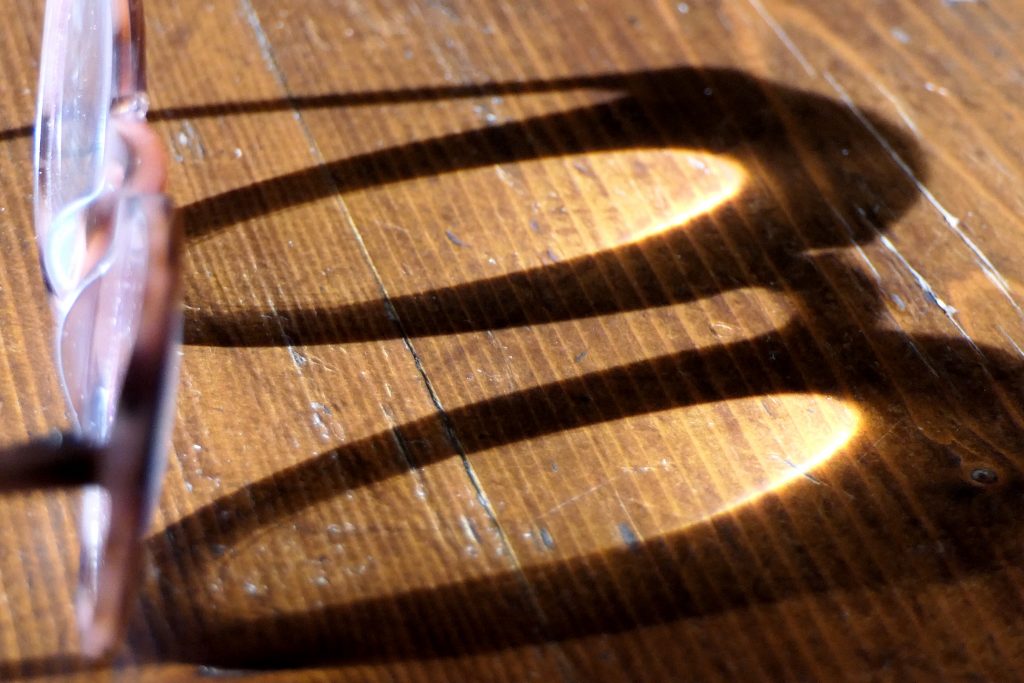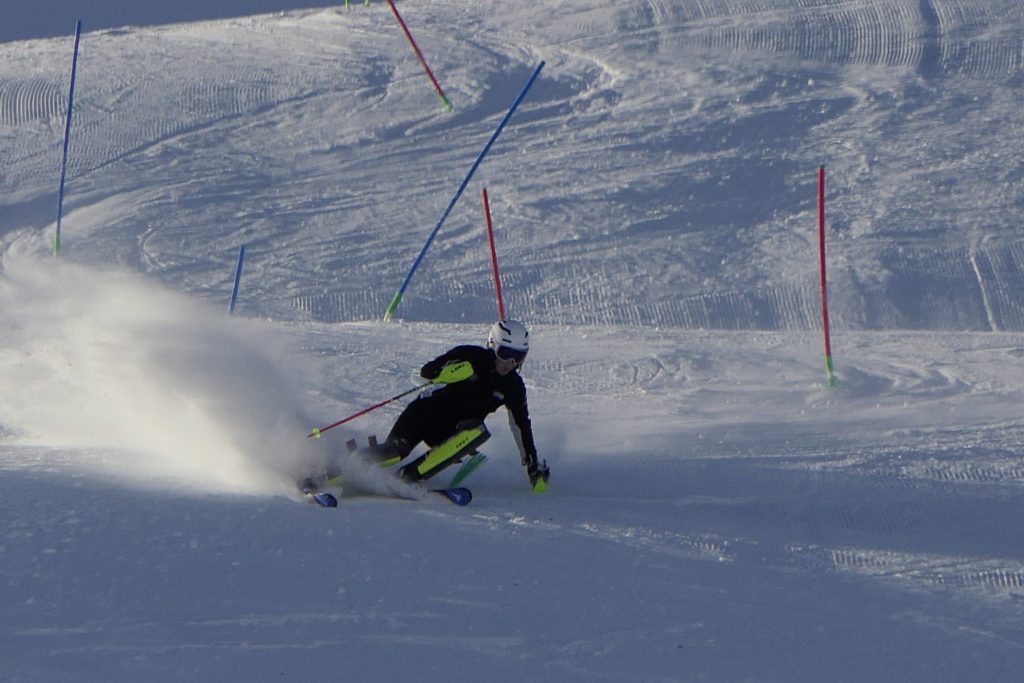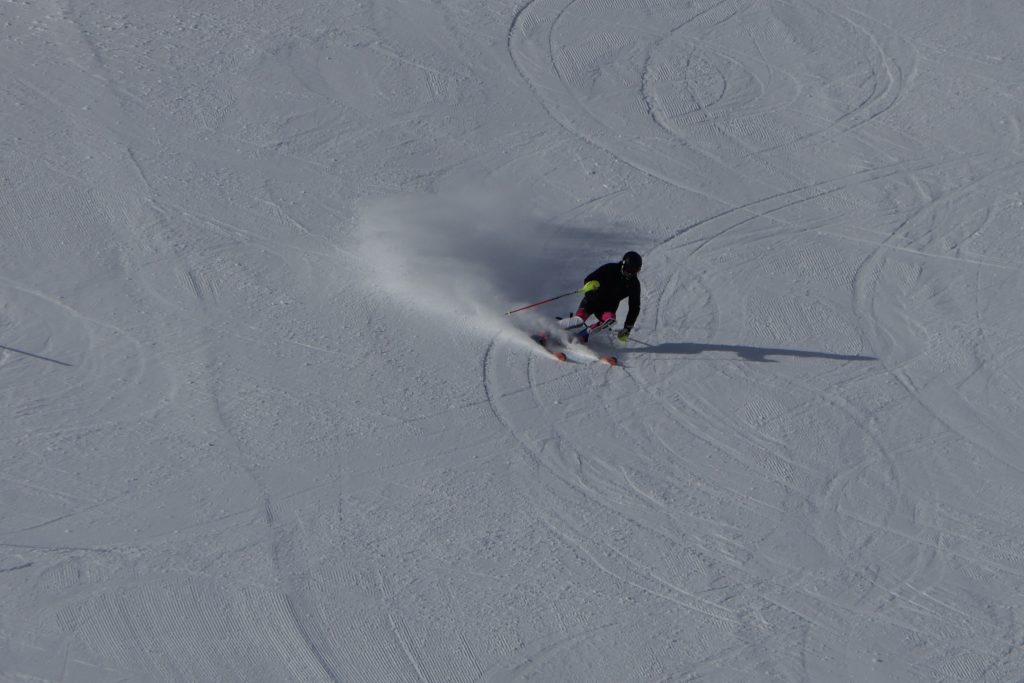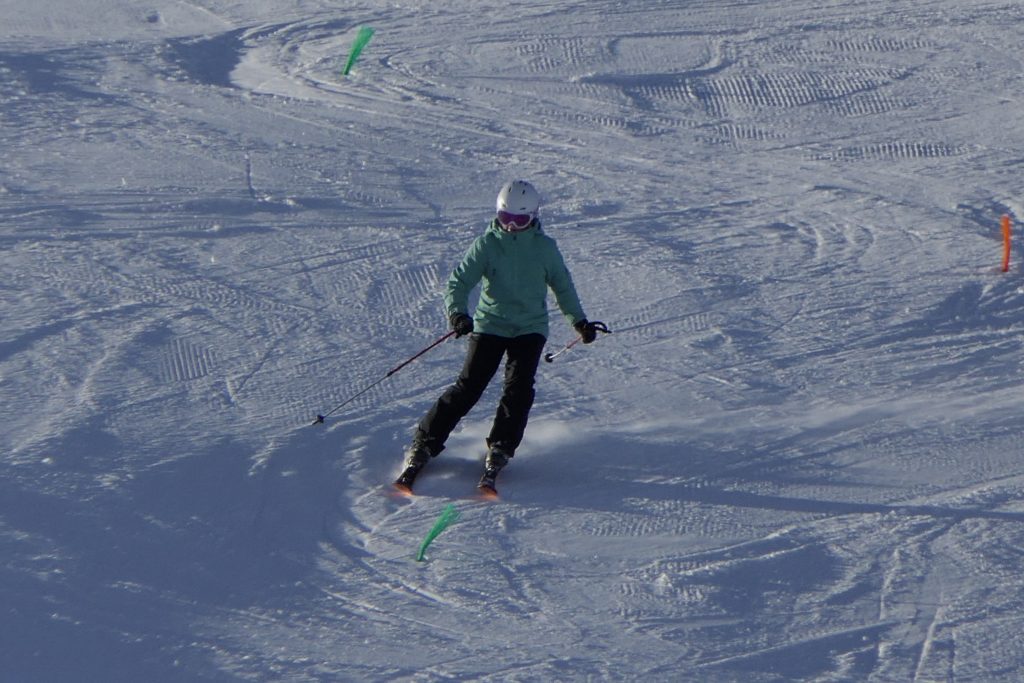Working as planned on improving angulation…
Tallulah – getting her arms forward. This brings the shoulders forward and keeps pressure on the front of the ski boots. Until now Tallulah was doing the opposite of all of those things. Exercises were done statically (and later in skiing) holding the ski poles horizontal in front of the body and keeping the poles across the slope as the turn progressed – to create angulation. Doing this statically requires imagination because you have to move the upper body while pretending that the upper body isn’t moving but everything below it is. Tallulah understood this immediately. She had to be reminded to push off with the uphill leg to work the first half of the turn.
Daisy – has been struggling with her stance in the ski boots and this has been clearly affecting her technical progress. Her wide soleus muscle below the calf and wide calf muscle means that she can’t stand up in her boot and has to use the fronts of the boots to lean against all of the time. This is drowning out feedback that would guide her to use the boots and pressure functionally.
Studying the video it’s clear that Daisy isn’t taking charge of finishing her turns and directing her momentum. There’s angulation, dynamics speed – but the skis are often over-edged and just run away with her. This is a typical problem due to learning to ski long turns on carving skis – skiing fast where there are no demands on when specifically to turn and a shortage of work on pivoting. We looked at one exercise for working the skis (statically pushing the ski boot forward in an arc in the snow) – but this needs to translate mainly to pivoting when skiing – before it can be used during carving.
Alex – good solid work! Improvement on the left foot turns regarding rotation and angulation – but there’s still some. The body looks more symmetrical and shoulders not unnecessarily tipping into the inside of the turn. (This is the hallmark of an accomplished skier!) The fronts of the skis are being used and aggression is channelled on the right things – not hissy fits!
Notice that when the body crosses over the skis in the transition most of the turns it crosses over somewhere between the middle of the skis to the rear of the skis. Seldom is the body crossing over the fronts of the skis. I suspect the remaining airborne stivots are due to this – losing a lot of time in the process – because if the crossover was further forward the front of the ski would remain in snow contact and propel the turn (and centre of mass) during leg extension. This is where added aggressive “skating” attacking power really generates speed. Eventually the aggression has to be used to add extra accelerations directly from impulses. It’s the same principle as a pump track for a BMX bike. Doing so makes you more stable and secure – not the opposite. Remember skiing is about controlled accelerations and the stability they generate – as far from equilibrium as is possible!





